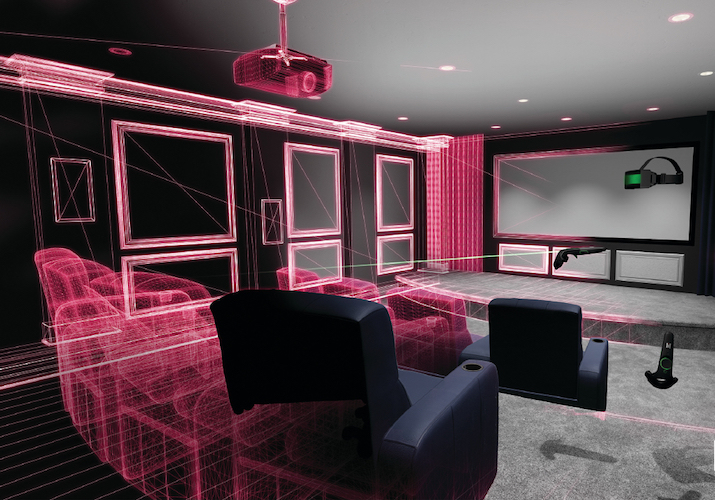Modus VR, developer of the world’s first virtual reality design software for media rooms and home theaters, has upgraded its platform to deliver more control and customization for integrators and their clients.
According to Modus VR Co-Founder Ken Brueck, the new software improves every step of the design process, from offering new aesthetics options to an updated CAD export workflow, allowing integrators to design faster, improve the client’s virtual experience, and close more sales.
“Media rooms and home theaters are more popular than ever, and with the new version of Modus VR, integrators can deliver a stunning virtual reality experience to clients that expedites the design process and increases sales opportunities,” Brueck said. “The new software provides more flexibility and options than ever before, including an updated CAD export workflow, options for new virtual finishes and materials, support for new Windows Mixed Reality headsets, and improved organization of the virtual objects library.”
With Modus VR’s new CAD export workflow, once a room is built in virtual reality, it can be exported as a CAD document faster than ever. Using a simple UI, integrators can create as many different views of the space as they need, and even add a company logo and information to PDFs for the ultimate in professional presentation. The new support for Windows Mixed Reality headsets further enhances the sales process by eliminating the need for external sensors and making setup and breakdown of a VR experience much faster and simpler.
New virtual objects are available representing two new Epson projectors, SnapAV Signature Series racks, more default sizes for 16:9 projection screens, area rugs, ceiling fans, and fiber optic ceilings.
New finishes also are available for floors and walls, including select wood flooring, various carpet patterns, polished concrete, and more, while seating options now include a variety of leathers and microfiber.
Some existing objects received minor upgrades, such as in-ceiling speakers with smaller bezels, recessed lighting with round and square options in four sizes, and additional pendant light styles. A new flexible couch and ottoman can be resized on three axes for complete control, with a realistic, reactive appearance that adds cushions as length is increased.
“We want the design and sales process to be as streamlined as possible, and we’ve added several new tools to help integrators achieve that goal,” Brueck added. “They can now restrict user controls so clients can’t accidentally make changes during a VR demo, and each virtual space saves all its characteristics for the next time the file is opened. This way salespeople can create curated experiences with specific lighting or other options.”
Modus VR’s object library, where 3D models of all the furniture, appliances, and decorations are stored, is now organized into categories, providing much faster object selection and enabling larger libraries that are easier to navigate. Aesthetics options also received upgrades, with the added ability to select wood flooring, various carpet patterns, polished concrete, and more. Seating options now include a variety of leathers and microfiber.
The new process for creating color palettes has been simplified, as well. Designers can set up their own library of color swatches, assign them to multiple objects, and then make sweeping changes in seconds. The software update also includes several bug fixes. These updates are immediately available to all existing customers at no additional charge.
“Modus VR provides the best way to show clients exactly what their proposed theater or media room will look and feel like, and we are continually developing new features and options that enable integrators to create convincing, engaging virtual spaces to close more sales,” Brueck said.








